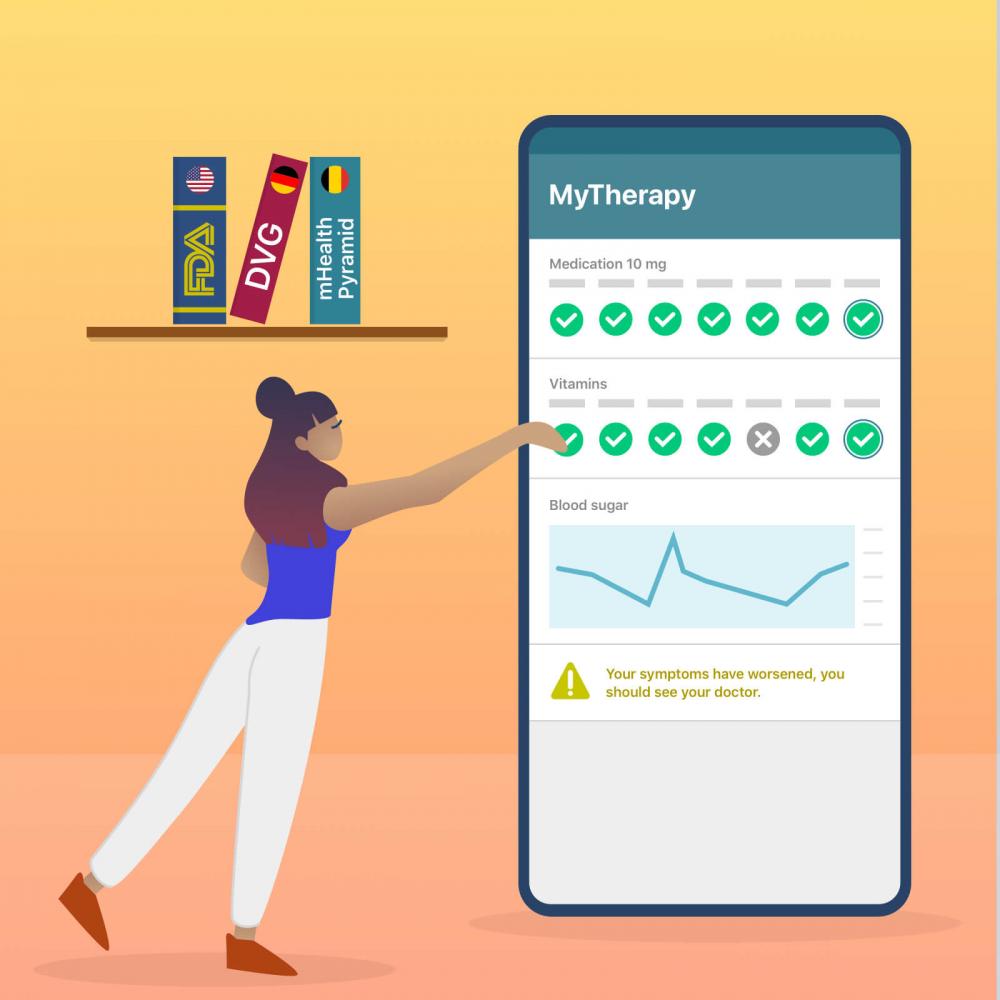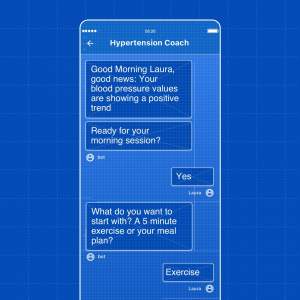Digital Therapeutics Regulation: 3 Leading Countries (inc. FDA, MDR, & DiGA)
From the FDA driving innovative regulatory models to Germany building on MDD/MDR to allow doctors to prescribe DiGAs to over 70 million people, Digital Therapeutics are gradually finding their place in the healthcare ecosystem. Here is how 3 global leaders are driving DTx regulation.

- For years, countries have struggled to keep pace with digital health innovation when it comes to SaMD (Software-as-Medical-Device) regulation and reimbursement
- More recently, countries such as the US and Germany are finding solutions that are opening the door to prescription digital therapeutics (DTx) and app reimbursement
- Expect a domino effect to occur as more countries seek to entice DTx players to their market (see #3 on this list – it might surprise you)
Digital therapeutics (DTx) are defined by their capability of having a measurable impact on health outcomes. With it becoming ever-clearer that DTx can play a significant role in the treatment of many conditions, around the world health bodies (such as the FDA) and new regulations (such as the EU's incoming MDR) are creating regulatory frameworks for DTx safety and efficacy. Regulators are needing to find ways of preserving the dynamic nature of digital therapeutics and allowing them to go through iterative improvements. At the same time, appropriate application of SaMD (Software as Medical Device) regulation needs to ensure patient safety and reimbursement standards need to warrant benefits to outweigh cost. Here are 3 countries leading the way in digital therapeutics regulation.
The US: FDA Driving Innovation and Approval
Considering that the US is at the forefront of the tech world, it comes as little surprise that it is also home to many of the most innovative DTx companies.
Nonetheless, for digital therapeutics to become an accepted part of the healthcare paradigm, the Food and Drug Administration (FDA) has needed to take a forward-thinking approach. In addition to approving apps for therapeutic purposes – which it first did in 2017 – the FDA has proactively aimed to tackle issues such as the inefficiency of reviewing and rereviewing apps as they undergo iterative improvements. Rather, its Digital Health Software Precertification Program is a pilot scheme that takes the novel approach of regulating the company rather than the product.
This means that companies must provide evidence of aspects such as a robust quality management system and a demonstrable ability to keep data secure (e.g. with an ISO 27001-compliant ISMS). This, combined with more stringent requirements relating to issues such as post-market surveillance, helps ensure patients' safety while leaving DTx innovators free to improve their products. An update published in September 2020 laid out the FDA’s plan to advance the scheme in the coming months and years. The FDA’s proactive approach and experience in evaluating digital therapeutics undoubtedly put it at the forefront of regulatory bodies best-equipped for DTx.
Perhaps the biggest challenge facing the US is reimbursement. With the evidence supporting the efficacy of digital therapeutics stacking up, though, more payers are coming round to the idea of DTx reimbursement and the business case for offering it.
Germany & DiGAs: A World First for Digital Therapeutics Reimbursement
The issue of reimbursement is an easier one to tackle in Germany. While Germany does not have single-payer healthcare, around 73 million people are covered by public health insurance companies. When Germany passed the Digital Care Act (‘Digitale Versorgung Gesetz’ or ‘DVG’) in 2019, it created a pathway for doctors to prescribe digital therapeutics to publicly-insured patients and receive reimbursement in much the same way as a traditional treatment. This catapulted Germany to global leaders in digital therapeutics regulation; no other country has yet made prescription DTx so widely available to such a high percentage of the population.
Since the DVG has been introduced, Germany’s Federal Institute for Drugs and Medical Devices ('BfArM') has issued guidelines relating to the evaluation process digital health apps (DiGAs) must go through to be eligible for reimbursement. Firstly, for any app to be eligible it must of the risk class I or IIa under the EU's Medical Device Directive (MDD) or, more importantly, the incoming Medical Device Regulation (MDR). Under MDR, the majority of apps that can self-classify as class I under MDD will be "up-classed" to class IIa under MDR, meaning they will need to meet more stringent criteria to receive a CE mark.
Beyond meeting MDD/MDR standards, BfArM's guidelines define further requirements for issues such as safety and efficacy, and the timeframe DiGA developers must meet for their DTx to be approved. The process has been dubbed the ‘Fast-Track’, as it allows DiGAs to be granted preliminary approval following an evaluation, after which developers will have 12 months to generate sufficient evidence regarding safety and efficacy for full approval.
You can read our breakdown of the hurdles developers must overcome to bring DiGAs to market here: Germany’s Fast-Track to Health App Reimbursement: 5 Hurdles You Should Know About.
At the time of writing, 10 DiGAs have been approved and are listed on BfArM’s website. With the regulatory framework in place and the pandemic raising awareness of the benefits of digital healthcare, 2021 could be a defining year for digital therapeutics in Germany. You can about 7 expectations we have here: DiGAs 2021: How Reimbursement, Regulation, and Competition Will Shape Germany’s Evolving DTx Market
Belgium: The First to Follow in Germany’s Footsteps
In December, we predicted that the German model described above would likely act as a blueprint for other countries. In particular, we saw European countries taking inspiration for introducing regulation that aligns with the EU’s incoming Medical Device Regulation (MDR), as described above.
Sure enough, Belgium recently announced its intention to do just that. In late January, the National Institute for Health and Disability Insurance (NIHDI) announced that the Insurance Committee had given the go-ahead for app reimbursement. Any developer with ambitions to have digital therapeutics approved for reimbursement will need to go through an approval process to reach the top of Belgium’s mHealth “pyramid”. This top section of this category is called M3; at the time of writing, 26 apps are at at either M1 or M2 level, with none yet to reach M3. All things considered, NIHDI’s approach to regulation and DTx approval closely resembles that of Germany’s BfArM.
While Belgium may not win any awards for originality, embracing the DiGA model and adapting it to work within the country’s healthcare system and regulatory environment means it is a step ahead of most other countries. It is an approach that we expect other countries to take in the not-too-distance future. Subsequently, largely similar standards across countries would make Europe a particularly attractive destination for DTx innovators.
Digital Therapeutics Regulation: What Does it Mean for You?
Navigating evolving regulatory frameworks around the globe is no mean feat for anyone aiming to bring digital therapeutics to market. Partnering with companies that can implement innovative DTx elements upon a proven and approved platform is a model we expect to become commonplace, helping cut time-to-market and mitigate the risk of costly delays. At smartpatient, we can implement DiGAs and DTx using MyTherapy, a disease management app with millions of users and global regulatory compliance. Having the technology and the processes in place, we enable partners to quickly launch digital therapeutics while adhering to various local market requirements. Sounds interesting? Don't hesitate to get in touch.



